When I first began work on this history of the tramways of Île-de-France, I expected it to last for maybe two or three articles. But the chaotic early days of the region’s historic network provided ample material. By part 7, we’d only made it halfway! From the mid-19th century until the network’s closure in the 1930s, dozens of companies had built hundreds of lines using several different technologies, from horses to steam to various forms of electric traction.
The modern network has its own share of chaos. Its 14 lines boast almost as many different configurations. Most run on steel rails, but two use rubber tyres. Most run with 750 V DC overhead power lines, but two other electrification systems are also in use. Most run on the right, but one line runs on the left, and two have sections of both. Most have dedicated rights of way, but there are exceptions here too. Signalling also varies, as well as who operates the trams, and how journeys are paid for.
This variety began early.
Today, we will introduce the second and third lines to open, uncovering the source of some of that variety. We will start by rewinding to 1875, at the birth of the two early railways which would eventually become lines 2 and 4 of the modern tramway.
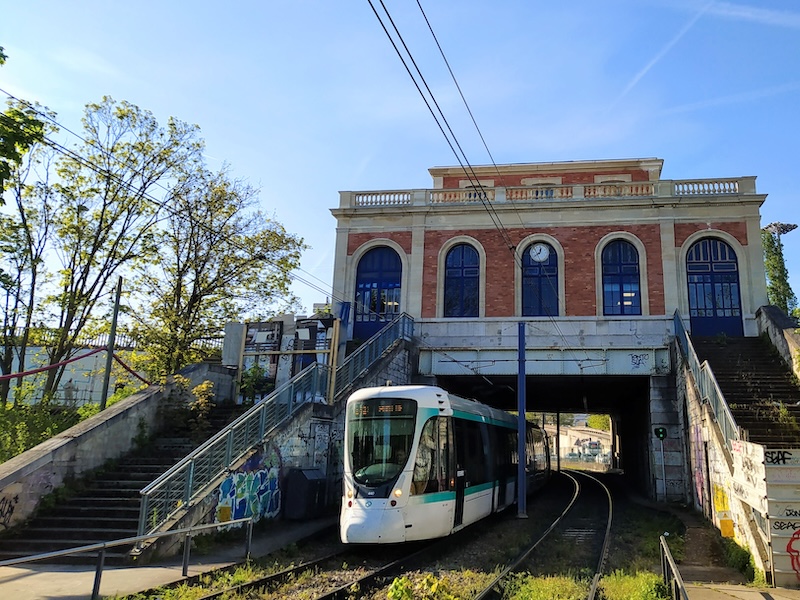
Origins
In August 1875, a railway opened between the northeastern suburbs of Bondy and Aulnay-sous-Bois. Running through a forest, it was built at the initiative of a group of local industrialists, most notably inventor Louis-Xavier Gargan, to serve their interests in the area. The line would transport wood from the forest and gypsum from the nearby hills to Gargan’s factory in Paris.
At the end of the same year, another new railway was approved to the west. This would serve the 1878 Exposition universelle on the Champ de Mars. From the venue in Paris’s 7th arrondissement, trains would run along the Seine’s left bank, following the river south west to the village of Les Moulineaux, then north to the suburb of Courbevoie. Discussions stalled, and the 1878 deadline was missed by over a decade. But the new line, which branched off from a route out of Saint-Lazare a little south of Courbevoie, opened in time for the 1889 Exposition, bringing visitors to the newly-built Eiffel Tower.
At the time, these two lines had little in common. But both would struggle during the 20th century, and both would eventually be reborn as tramways in the first decade of the 2000s.
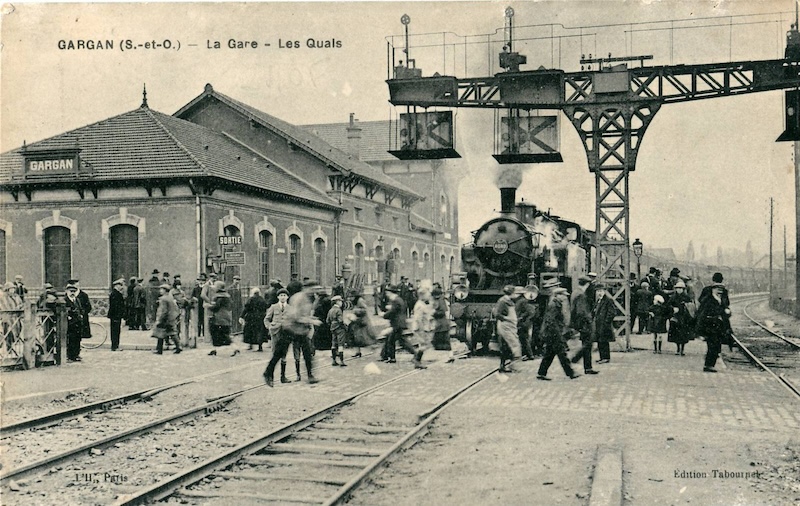
The Moulineaux line
The Moulineaux line’s decline began as early as 1902, when a new railway was built from Invalides to Versailles. This new line used the existing tracks between the Champ de Mars and Issy, just outside the city. On this shared section, priority was given to trains to Versailles, and although through trains between Saint-Lazare and Invalides chuntered on until the 1930s, the line was subsequently detached, terminating at Issy. The stub survived, but didn’t see the same level of investment as its neighbours. By the 1980s, its tired tracks were carrying less than 5000 passengers each day. And yet major business districts were springing up at both ends: the Val de Seine in the south, and La Défense – Europe’s largest – at the other. The potential was there for this railway to be an important part of the region’s transport system.
The first brainstorming sessions towards modernising the line took place in the early 1970s. Many of the early suggestions involved connecting it to the mostly-defunct Petite Ceinture. At one point, the futuristic Aramis – pod-based “personal rapid transit” – was on the table.
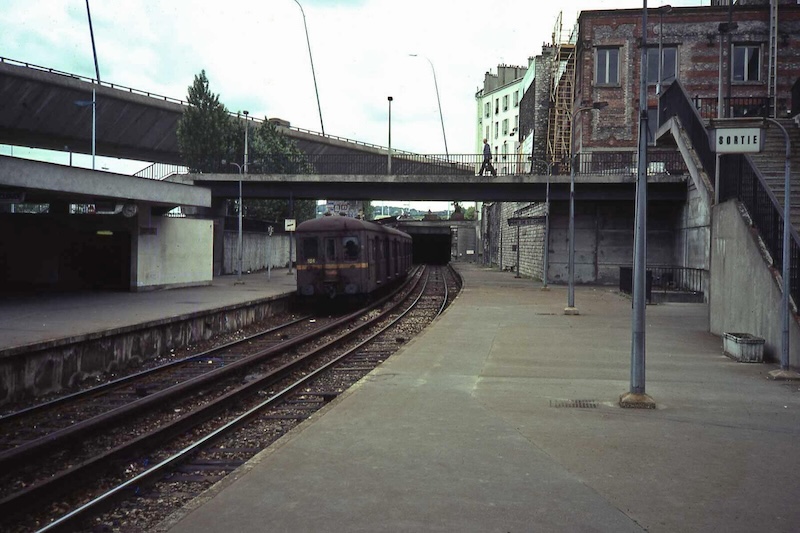
But by the end the of the 1980s, there was a hot new player on the French transit scene: the modern tramway. Provincial pioneers Nantes and Grenoble were already operating new tram lines, and Paris’s line 1 was on its way. For the Moulineaux line, trams looked like a good option. Ridership was too low for heavy rail; trams might one day be extended with street running; and for national railway operator SNCF, this was an excuse to palm off a line they didn’t much care for onto the RATP.
Line T2 of the Île-de-France tramway was finally approved in 1993, 8 months after the opening of line 1. Four years of engineering work followed, both to modernise the existing line and adapt it for trams, and to build a brand-new section, alongside the main railway, between Puteaux and la Défense. A legal challenge from the mayor of Puteaux delayed things, but by 1997 the tramway was ready to open.
It was an instant hit. Boffins had predicted 30 000 daily passengers after three years, but that target was met in just three months. The TFS vehicles (the same as those on line 1) were taking passengers every four minutes and achieving average speeds just shy of 30 km/h, making it France’s fastest tramway at the time. With ridership so high, it didn’t take long for authorities to look for longer vehicles.
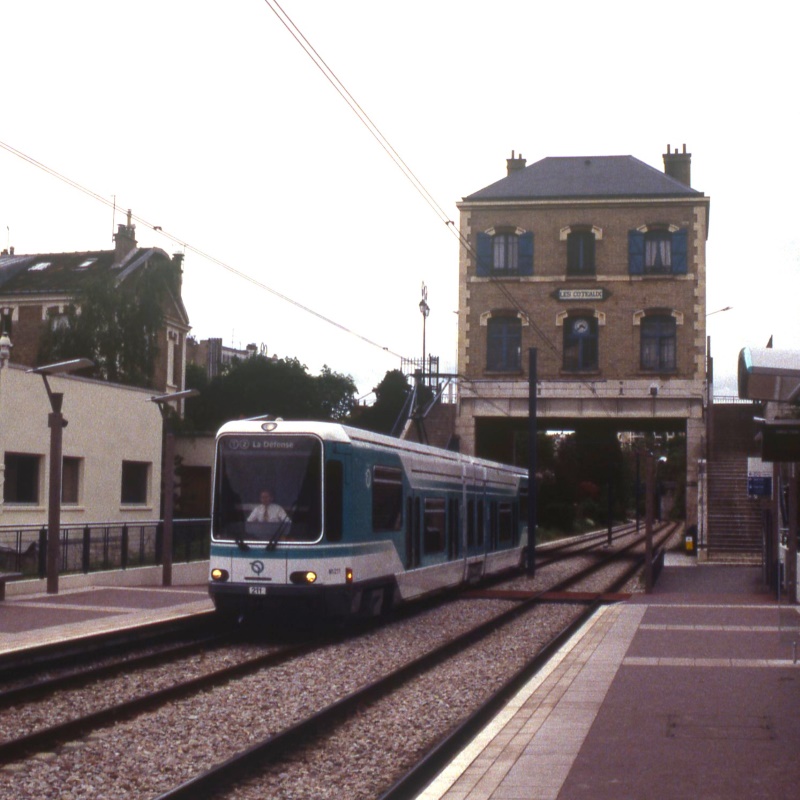
Enter the Citadis, now the mainstay of tramways across France. Constructed by Alstom – the French multinational behind the TFS – the Citadis 301 debuted in 1999 in Montpellier and Orléans. But the first version to arrive in Paris was the 302, a 5-car vehicle with a low floor for 100% of the length, capable of carrying 213 passengers – up from 178 for the TFS. The first units began circulating in 2002, with the liberated TFS trams moving to line 1. The biggest advantage was the fact they could be coupled together to form longer vehicles. From 2005, that’s exactly what happened on line 2.
The promise of street-running extensions would eventually come true at both ends. But we’ll cover that next time.
In the meantime, the overwhelming success of line T2 had the SNCF wondering: had it been such a good idea to give the Moulineaux line to the RATP?
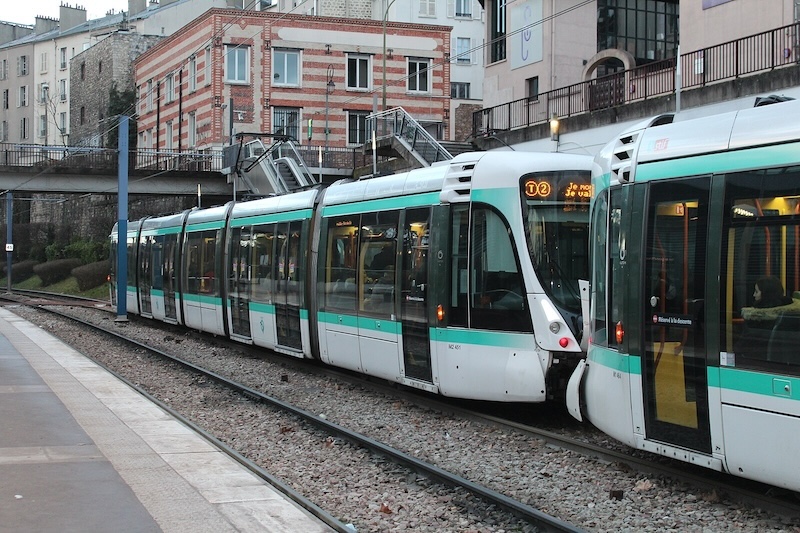
The Aulnay-Bondy line
The Aulnay-Bondy line struggled at first. But as the area urbanised, thanks in large part to new housing around Gargan’s factory, it started to gain importance as a passenger railway. In fact, the industrialist’s name was so closely tied to this area that in 1912, the town of Livry officially became known as Livry-Gargan. Trains carried passengers directly from a station in his name to Paris’s Gare de l’Est.
This urbanisation was great news for the railway at first: passenger numbers rose throughout the early part of the 20th century. But then the number of cars began to rise. The line’s numerous level crossings became an increasing issue, with traffic blocking all the neighbouring streets whenever the bell sounded. For the railway, this limited frequencies: the barriers couldn’t be closed all day. Planners considered digging a cutting, but this was too expensive to be realistic.
In the 1990s, a new RER line was created, extending existing tracks in the east with a brand-new tunnel in central Paris: line E1. This new route incorporated the main line through Bondy. As for services on the branch to Gargan, these were detached to ensure a regular service for the RER. From 1993 – several years before the RER actually opened – the Aulnay-Bondy line operated only a shuttle service, forcing passengers to transfer at Bondy. Ridership, already down to 16500 passengers per day in 1992, fell below 10000 by the end of the century.

As we’ve seen, tramways were being taken seriously once again in the 1990s. And line T2 quickly demonstrated that converting a main line for trams could offer great results. Planners considered doing the same thing here. Those troublesome level crossings would be turned into mere crossroads. But the plan they adopted in 2001 was subtly different: instead of running trams like those seen on lines 1 and 2, this line would run tram-train vehicles.
Work, which included doubling the formerly single-track section north of Gargan, began in 2004. Line T4 was inaugurated two years later, in November 2006.
The tram-train concept, pioneered in the German city of Karlsruhe a decade earlier, uses vehicles adapted to both mainline and street running. This allows Karlsruhe, a relatively small city, to make the most of its existing suburban train network by connecting it directly with an urban tramway. Tram-trains run on the street in the city centre, switching to mainline operation outside to connect with nearby towns. Crucially, the vehicles can draw current from both 750 V DC and 15 kV AC overhead lines.
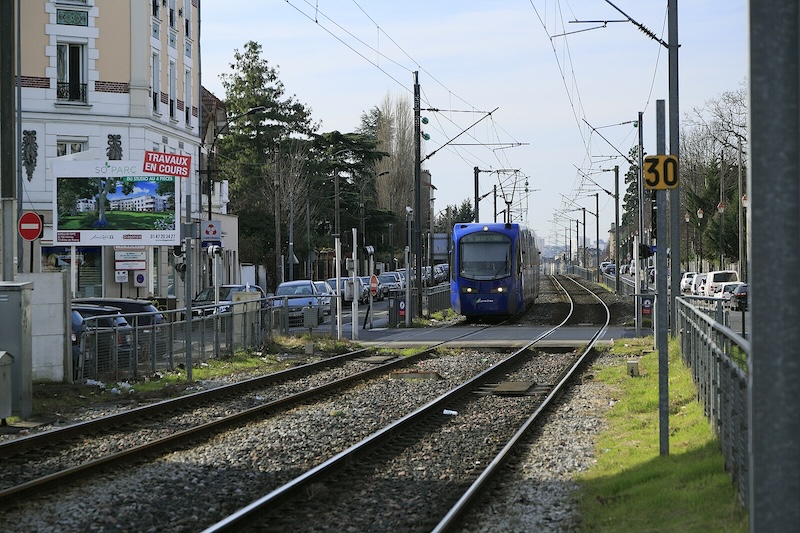
In the strictest sense of the term – as in the suburbs of Karlsruhe – tram-trains share tracks with mainline services. But here, the Bondy-Aulnay line was completely cut off from the rest of the network. On the converted line, vehicles run on the right, like on French roads and tramways (and the Paris metro) but unlike railways. Instead of relying on railway signals to know if the track ahead is clear, operators drive “on sight” – by looking at what’s ahead of them – just as they would on a conventional tramway. Where there are signals, these are not railway signals, but the same as those seen on Paris’s other urban tramways.
On the other hand, the overhead electrification is 25 kV AC, in common with railways in this part of France. As far as I can tell, the only benefit of operating tram-trains rather than conventional trams is that this 25 kV electrification could be maintained. And for the SNCF, just as turning the Moulineaux line into a tramway meant they could pass it onto the RATP, keeping the Bondy-Aulnay line as a railway gave them an excuse to hold onto the operations.
But then, why use tram-train technology at all, rather than just good old-fashioned trains? The answer, as with line T2, is that the line was always planned to be extended with street running. That finally happened in 2019, with the opening of a branch to Montfermeil.
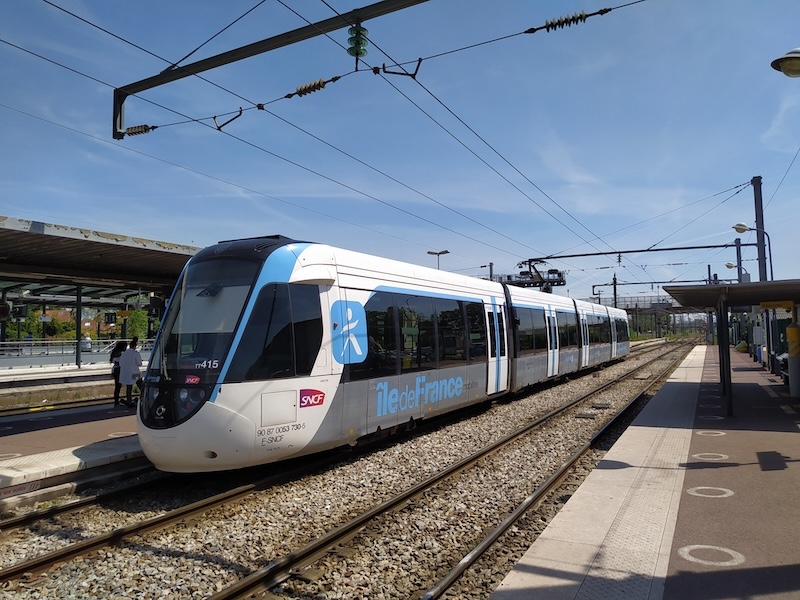
The line hasn’t been as wildly successful as the T2, but footfall has increased markedly since the conversion, and especially since the branch opened. That said, there have been a lot of operational issues, especially in the mid-2010s when punctuality dipped below 75%.
Île-de-France has opened three more tram-train lines in recent years. But no two of the region’s five converted railways look the same. We’ll revisit this subject later in the series. In the meantime, you might have noticed that we’ve discussed lines 1, 2 and 4 of the modern network, but not yet line 3. We will cover that in the next edition, which charts the return of trams inside the city limits of Paris. Make sure to subscribe so you don’t miss it.
-
Line E has been in the news just this month, with the opening of a new western extension through La Défense. For now, service is operating on a very partial timetable. ↩
 Fabric of Paris
Fabric of Paris